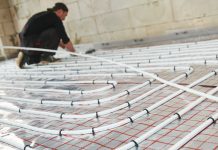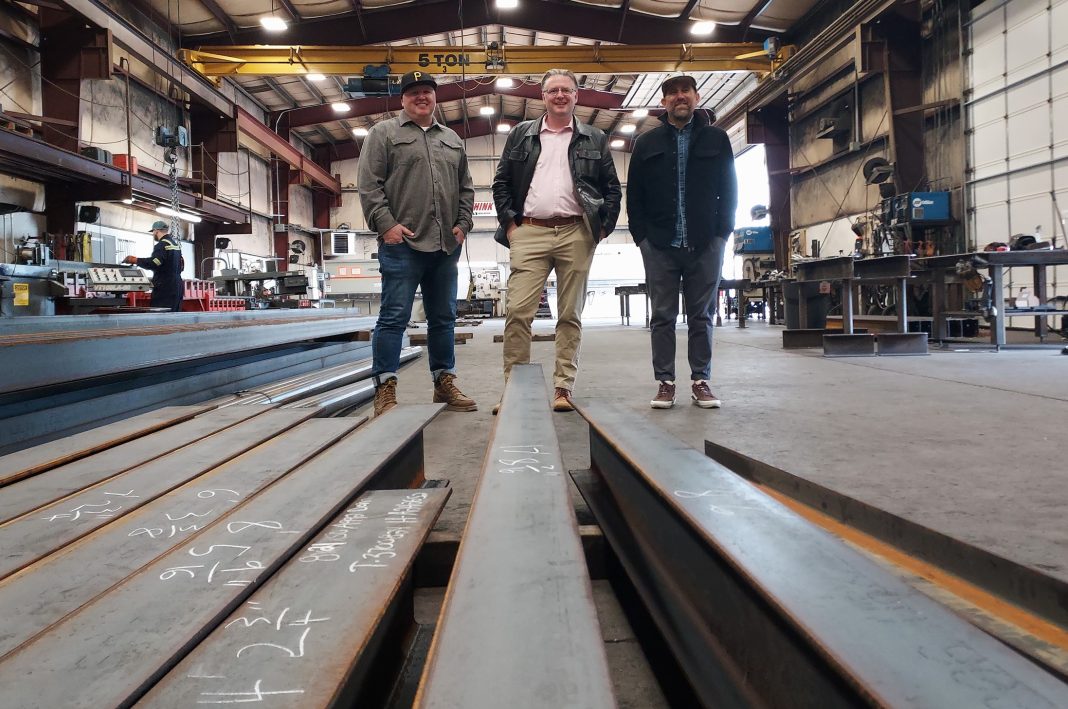For 40 years, A-1 Welding Incorporated has specialized in high-quality custom metal fabrication from its home in Bellingham’s Irongate Industrial Park.
Founded by Brad Davison, A1 and its 21 employees have welded components for everything from farmers market tents to multi-million-dollar Alaskan marina fit-outs.
Last year, A1 and its 22,000 square feet of workspace underwent a substantial change: new owners. When Davison and his wife decided to retire, the business was purchased by Tyler Meek and Kristjan Olsen — two local fabricators with decades of industry experience.
The duo from Longview and Ballard — both places well-known for their maritime industries — have worked side-by-side for years at different companies. They were not employees of A1 before the sale, but had worked with the company on projects in the past.
Meek and Olsen needed a commercial loan to make the business acquisition a reality, and although they spoke to several banks about lending, they settled on Bank of the Pacific to work with Commercial Banking Team Leader Jay Johnston.
Getting To Know Each Other
Johnston had actually known Meek for a number of years, having previously spoken with him about a potential business acquisition that ended up not working out. He told Meek then that he’d help if a future opportunity arose.
“I was really impressed with his business acumen, attention to detail, and drive,” Johnston says of Meek.
When Meek went to Olsen about choosing Bank of the Pacific for their loan, he had to convince Olsen that Johnston was their guy. But in the end, he was exactly the type of lender Olsen hoped he’d be.
“Jay’s really analytical,” he says. “You have other people who can check the boxes and push a loan through and not really care about the health, longevity, or sustainability of the business, whereas Jay was really interested in crunching all the numbers and understanding our situation.”
Making the Complex Digestible
Johnston says that commercial lending for business acquisitions is among the most complicated financial transactions a bank and a business can enter into.
“There’s a lot of moving parts,” he says. “You’re dealing with an already-operating business, there’s dynamics of the people who work for the company, the personalities of the buyers. You’re usually dealing with more leverage and less hard collateral, so there’s more financial risk.”
In addition to the ample risk presented to both bank and buyer, business buyouts also frequently feature participation from government programs due to the amount of leverage involved or lack of hard collateral. It is a process that requires ample trust from all sides.
Meek says that as their lender, Johnston gave them honest answers regarding their particular situation and what was needed to make their plan for A1 a feasible reality. They held numerous conversations early in the process and well before the transaction took place, to fully understand the right amount of loan risk for both them and the bank.
Bank of the Pacific excels at doing the commercial lending process right — something not all banks quite measure up to. Meek says other banks they spoke to about lending likely would have approved their loan, but none of them seemed as invested in the nitty-gritty details of their specific situation.
Lenders like Johnston, he adds, provide the experience and wisdom to tell someone if they should actually buy something, not simply whether they can. Olsen agrees.
“We almost feel like we have a consultant,” he says. “He’s a resource beyond financing the loan. If we’ve got a question about numbers and dollars, we can call Jay.”
A Strong Future
The process of acquiring A1 Welding Inc. was completed in late 2023. The business is continuing to excel at projects large and small and looks forward to its next 40 years of fabrication.
Johnston, whose office isn’t far from the Irongate Industrial Park, will be rooting for them, as he does with all his local commercial lending customers.
“We lay a really deep foundation, and we care more about the outcome for that customer than necessarily getting their business,” says Johnston. “We spend a lot of time planning to make sure it’s going to work for both the bank and the other party. We will walk away from it if it doesn’t work out, but we will spend the time to put the customer in the right place.”
Sponsored




































